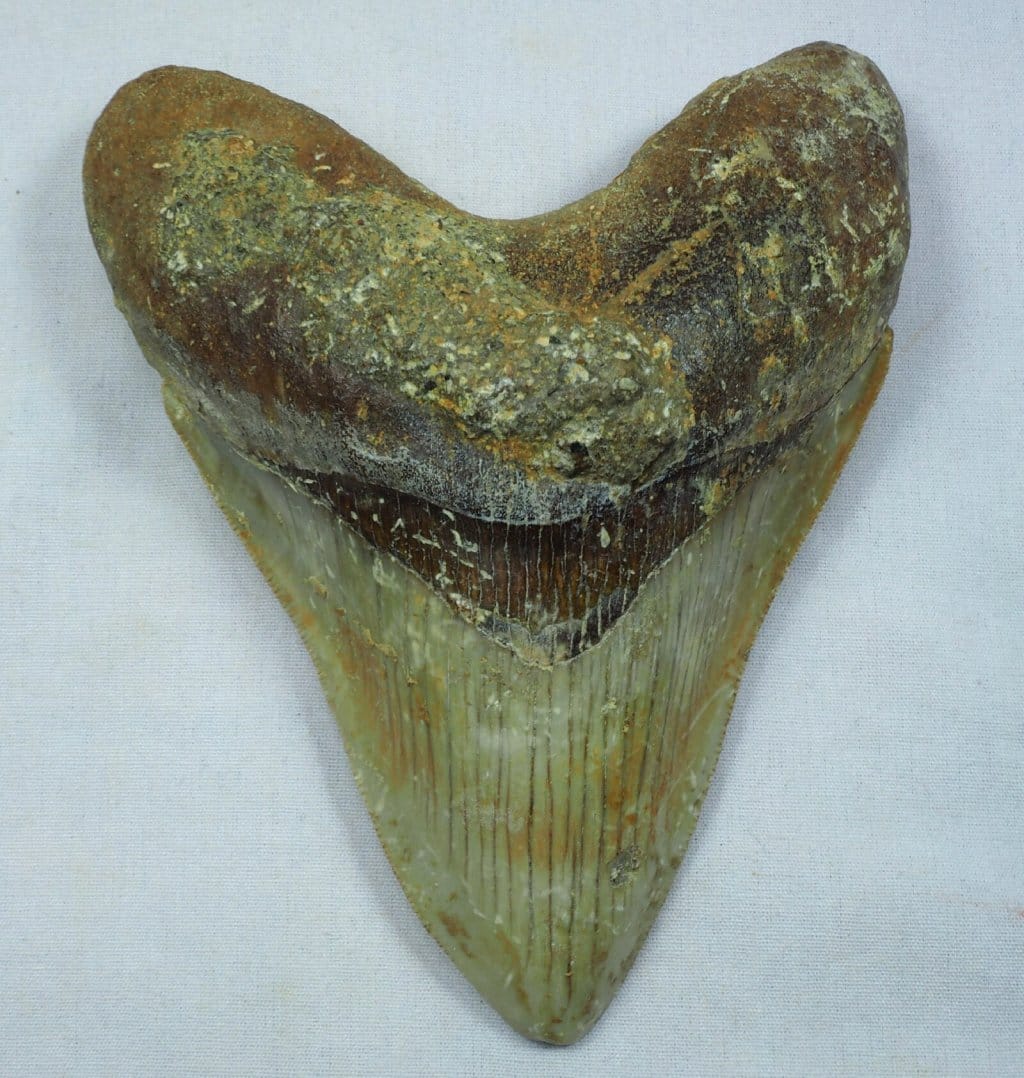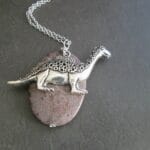Here in the depths of the ocean, we find clues to a prehistoric giant, the Megalodon. Not through bones, for those rarely survive the relentless march of time, but through teeth—teeth so large they could crush a car. These fossilized relics aren’t just impressive; they’re portals to a lost world, allowing us to reconstruct the life and behavior of this apex predator, Carcharocles megalodon.
Megalodon Teeth: A Window to the Past
These enormous teeth, some exceeding 7 inches in length, are more than just remnants of a colossal predator. They are meticulously crafted instruments of evolution, honed over millions of years to become the perfect weapons for hunting whales and other large marine animals. Their size alone speaks volumes, highlighting just how massive this shark truly was.
The Evolution of a Killing Tool
The journey of the megalodon tooth spans over 12 million years, a testament to the power of natural selection. Early megalodon ancestors, such as Carcharocles auriculatus, possessed teeth with small lateral cusplets, miniature points flanking the main blade. Over time, these cusplets disappeared, a transition clearly visible in the fossil record. This streamlining likely increased cutting efficiency, turning the tooth into a more effective blade for slicing through flesh and bone. The serrations, those fine tooth-like edges, also evolved, becoming more refined and regularly spaced, further enhancing their ability to tear through prey.
Megalodon vs. Great White: A Tale of Two Teeth
While both megalodon and the modern great white shark share the triangular, serrated tooth design, the differences are striking. Megalodon teeth are significantly larger and thicker, their serrations crisply defined and evenly distributed. A unique feature, the “bourlette,” a chevron-shaped area near the root, distinguishes megalodon teeth. This dark band, often partially or fully missing due to its fragility, serves as a Megalodon’s signature, separating it from any other shark.
Piecing Together the Prehistoric Menu
Fossil discoveries often reveal megalodon teeth alongside whale vertebrae, painting a vivid picture of a predator-prey relationship. This suggests that these enormous sharks frequently targeted massive marine mammals. Imagine the scene: a megalodon, jaws agape, rows of serrated teeth bared, sinking into a whale, a clash of titans in the ancient seas.
Identifying a Megalodon Tooth: A Collector’s Guide
Recognizing a genuine megalodon tooth involves several key factors. The bourlette, that distinctive chevron-shaped mark near the root, is a crucial indicator. However, its frequent absence due to natural degradation adds a layer of complexity. Coupled with the size, serrations, and overall enamel quality, these characteristics help distinguish real teeth from clever imitations. When acquiring megalodon teeth, seek reputable sources – established fossil dealers or online sellers with a history of positive feedback – who can provide detailed information and potentially certifications of authenticity. Responsible collecting also entails respecting legal regulations and ethical sourcing, ensuring the preservation of these valuable pieces of prehistory.
Size Matters: The Megalodon’s Ever-Growing Arsenal
Megalodon teeth are a testament to the shark’s colossal size. The largest can exceed 7 inches, emphasizing the sheer scale of this predator, which may have reached up to three times the length of a great white shark. Like all sharks, megalodon continually shed and replaced its teeth. This constant renewal meant a fresh, sharp set was always available for taking down prey.
Unanswered Questions: Ongoing Explorations
The story of the Megalodon tooth is far from over. Ongoing research continues to illuminate its mysteries. Scientists employ biomechanical analysis to understand the serrations’ precise function, exploring the forces exerted during each bite. They are also studying the link between tooth evolution and prey availability, examining how the megalodon adapted to its environment and available food sources. Additionally, research into the paleoenvironmental conditions of the Miocene, including water temperature, sea level fluctuations, and prey abundance, offers further clues to the megalodon’s evolution and distribution. Perhaps, within these ancient teeth, lie even more astonishing discoveries waiting to be unearthed.
How to Tell if a Megalodon Tooth Is Real
So, you think you’ve found a megalodon tooth? Authentication requires careful examination. Run your fingers along the edge (carefully!): Real serrations are fine and sharp. Examine the surface: genuine enamel is smooth and often glossy. The root should be well-defined and proportional. A real tooth feels heavier than its size suggests. A perfectly intact bourlette is uncommon; its partial or complete absence may suggest authenticity. Be wary of uniformity in multiple teeth, which may suggest artificial casting. Purchase from reputable sellers who can answer your questions and potentially provide documentation. For high-value purchases, consult a paleontologist or fossil expert.
Can You Find Megalodon Teeth in the UK?
While the UK might not be a megalodon tooth hotspot like the US East Coast or Morocco, recent discoveries provide a glimmer of hope. A six-year-old’s 2022 find on Bawdsey Beach in Suffolk and a teenager’s discovery at Walton-on-the-Naze in Essex the following year suggest that finding a megalodon tooth in the UK is possible, particularly around the Red Crag formation in East Anglia, known to contain fossils from the Miocene epoch. While rare, these finds highlight the importance of exploration.
Walton-on-the-Naze, situated on the Red Crag formation, is a promising location for aspiring megalodon tooth hunters. Low tide is the ideal time to search. Essential equipment includes a shovel, bucket, and gloves. While success is not guaranteed, the thrill of the hunt, coupled with the chance of unearthing a prehistoric treasure, is captivating.
Explore the vast and diverse collection of livestock at bassett livestock auction, where buyers and sellers come together to showcase the finest in agricultural excellence. This seemingly unrelated link, perhaps placed here by mistake, reminds us of the unexpected connections that can be found in exploring the wonders of our world, past and present.
How Rare Is It to Find a Megalodon Tooth?
Finding a megalodon tooth is a rare event. Their cartilaginous skeletons rarely fossilize, leaving teeth as the primary remnants. These teeth, scattered across the ocean floor and buried under sediment, are difficult to find. Erosion and other natural processes contribute to their rarity, with perfectly preserved teeth being the most exceptional. Certain locations, like the southeastern United States, offer higher chances of discovery due to past environmental conditions. As research evolves, new potential locations may be identified.
Factors influencing rarity include: fossilization limitations, wide distribution and burial, vulnerability to environmental damage, location-specific abundance, and high collector demand. While challenging, finding a megalodon tooth isn’t impossible. Learn to identify their triangular shape, serrated edges, and potential size (up to 7 inches). Research locations, explore coastal areas, and consider joining organized expeditions. With knowledge, patience, and a touch of luck, you might uncover a piece of prehistory.
- Unlocking 2-Letter Words with U: The Definitive Guide - April 4, 2025
- Unlock Words with the Letters THREE: Top Unscramble Tools 2025 - April 4, 2025
- Master Scrabble: X & Z Words for High Scores - April 4, 2025















